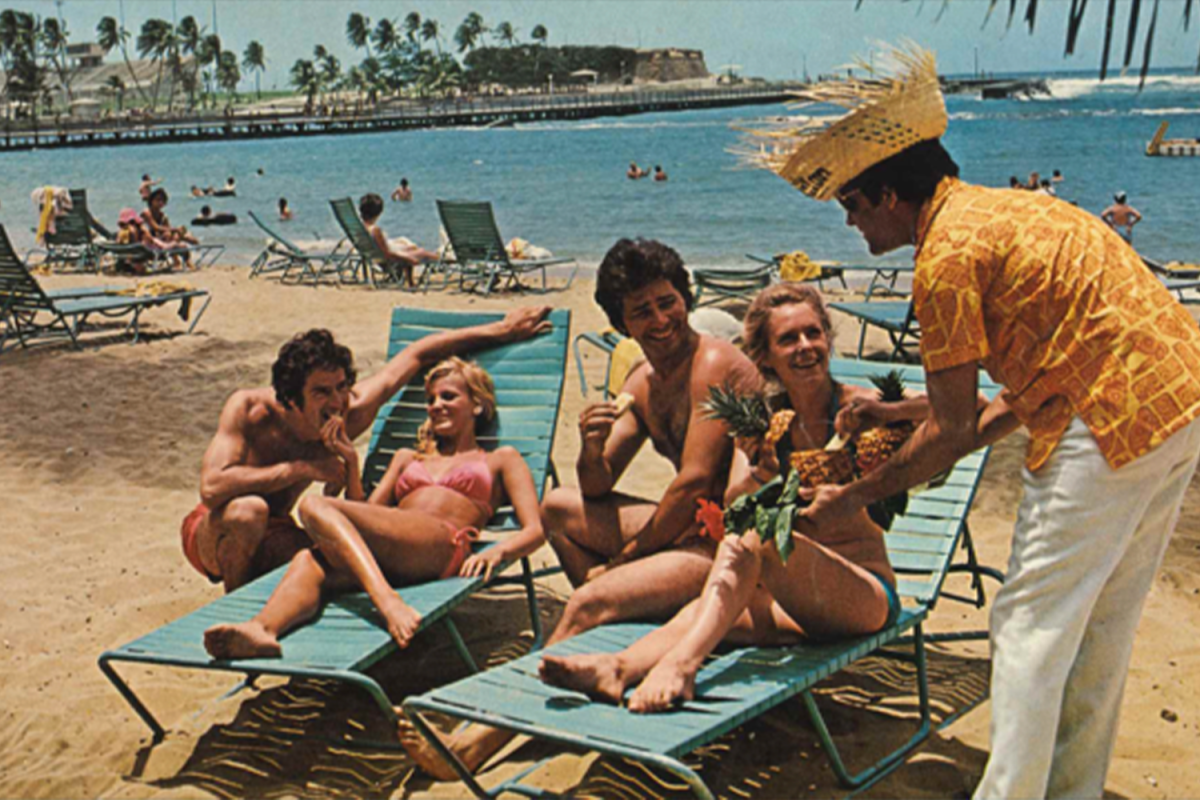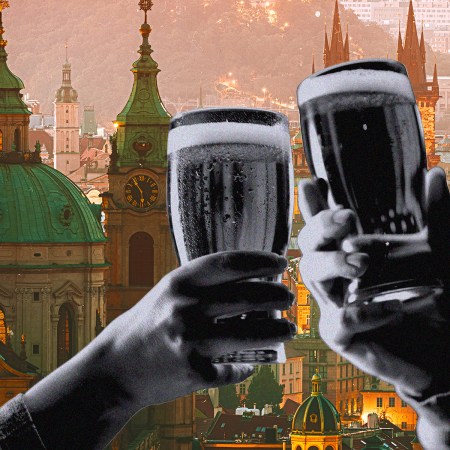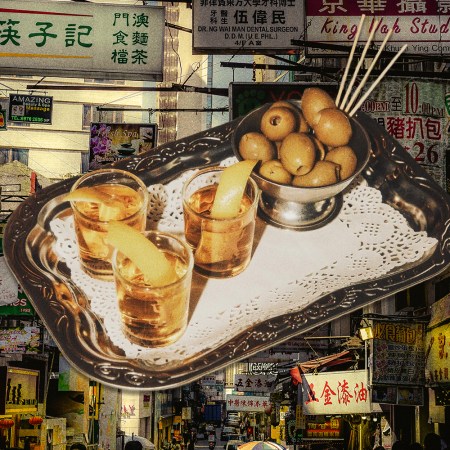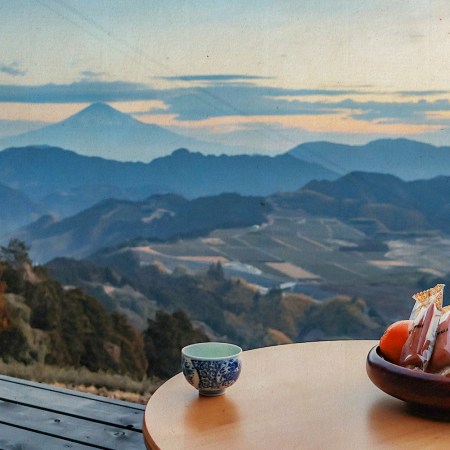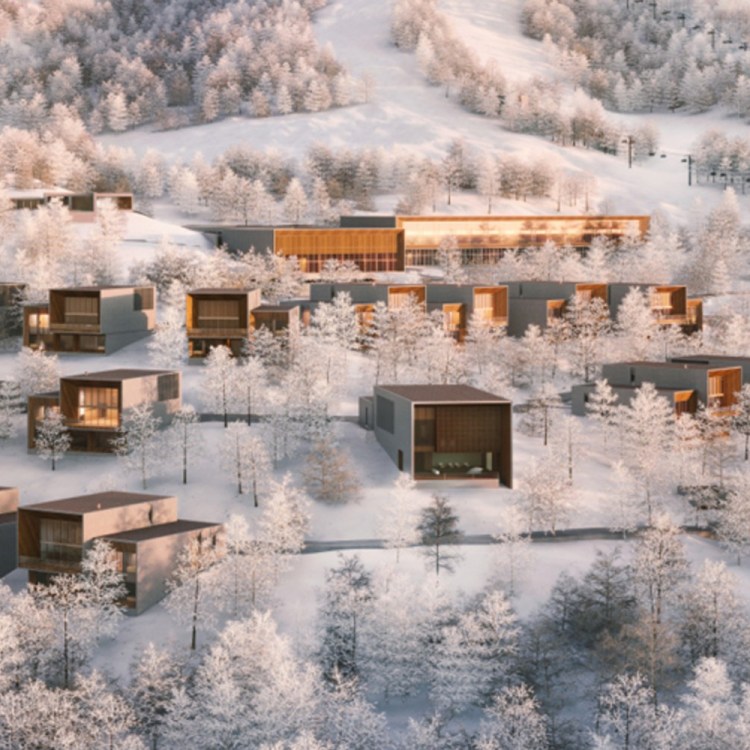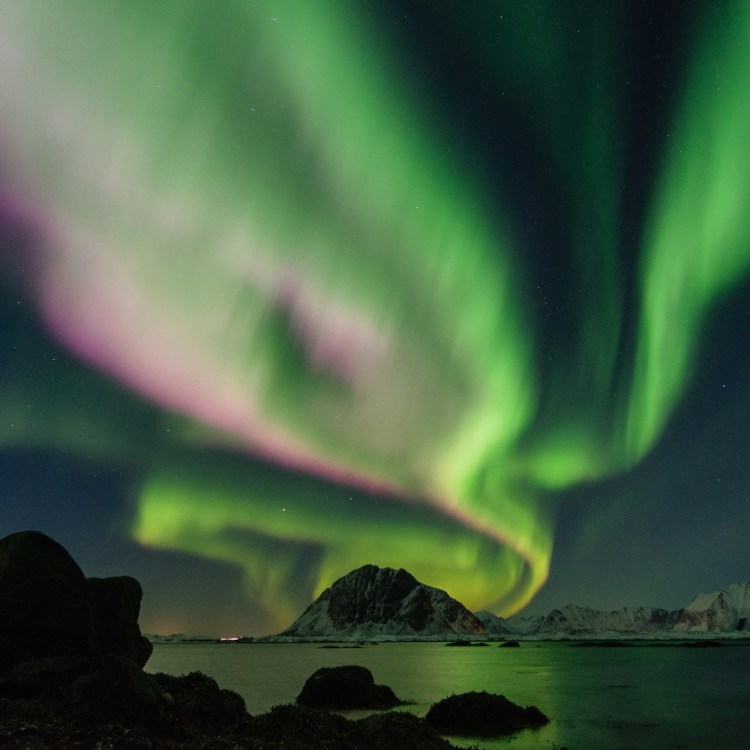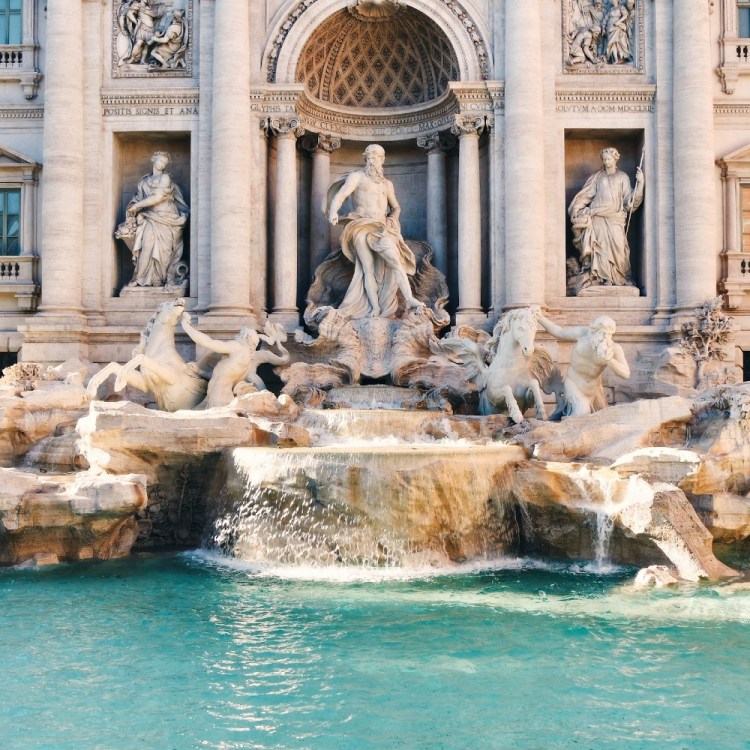Thirteen piña coladas in a week might not seem like much. But assuming I sleep for about seven hours per night, the math is more like one piña colada for every nine waking hours. If that still doesn’t sound like a lot — and I do not doubt the veracity of your all-inclusive binge that one time with your bros — I merely ask you to check my blood sugar level. I have no doubt it will tell the tale.
When I set off for a weeklong stint in Puerto Rico, returning to the island for the first time in a few years, I brainstormed the best way I could use my inquisitive imbibing talents to the benefit of you, our readers. The result was a perilous quest to discover the true origins of the piña colada in its undisputed home, and to search for its finest form.
“There’s two ways to get to know Puerto Rico: eating and drinking,” says Nahiomy Rodriguez, a guide leading a rum-focused tour through Old San Juan with Flavors Food Tours. “And when you think of Puerto Rico, you think about a piña colada.”
It should be said that a piña colada is hard to get wrong. At its worst it manages to get the job done. Maybe the flavor is off or there’s not enough rum, it’s too sugary or it doesn’t have the ideal texture. But you’re nitpicking, and you’ll probably finish your drink. As with pizza, even mediocre piña coladas are serviceable. But what makes a good piña colada great, and what elevates a great one into the realm of the sublime?
The Facts & Myths of the Piña Colada’s Creation
A drink as grand and occasionally perfect as the piña colada does not simply emerge fully-formed from nothingness. There are evolutionary steps, exchanges of information and adaptations; white lies and outright falsehoods, competing theories and claimants, and muddied, or perhaps more appropriately for a cocktail, muddled origins.
The piña colada came into the world in 1954 at the Caribe Hilton‘s Beachcomber Bar in San Juan, fathered by Ramón “Monchito” Marrero. It was the result of a promotional competition, and netted Monchito a television for his labors. Or so goes the most plausible and accepted story.
According to what I’ve dubbed the “second blender” theory — much like the second shooter of the JFK assassination, and the second spitter of Seinfeld fame — a different bartender at the Caribe, Ricardo Garcia, lays his own claim on the recipe. The fun doesn’t stop there though, as Barrachina, a restaurant in Old San Juan, also declares itself as the piña colada’s rightful birthplace.
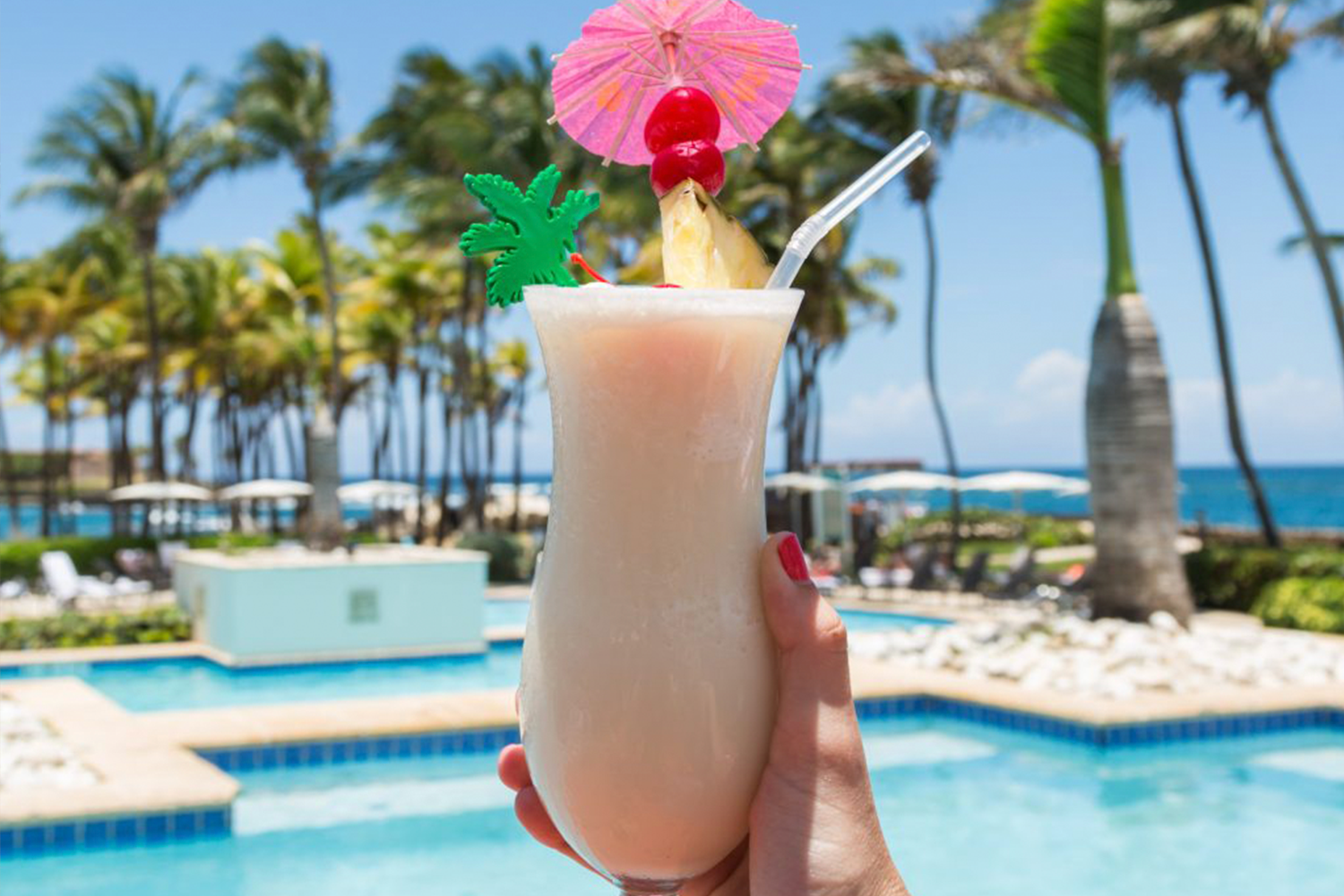
The Caribe Hilton has a dedicated wall in its lobby detailing the history of the drink and its official recipe, giving full honors to Marrero. It appears the second blender isn’t given much official credence by them or anyone else, leaving his claim to that of the aggrieved and forgotten coworker whose contributions, whether relevant or dubious, have been relegated to the trash bins of history. Barrachina, meanwhile, displays an engraved stone plaque at its entrance, indicating its location as “the house where in 1963 the piña colada was created by Don Ramón Portas Mingot.”
What are we to make of this all? Well, according to The Oxford Companion to Spirits and Cocktails, the encyclopedic drinks tome to end all drinks tomes due out this November from editor-in-chief David Wondrich and associate editor Noah Rothbaum, the Barrachina claim has several issues. First, you’ll notice 1963 is nearly a decade after Marrero’s supposed creation.
Moreover, according to the same research, “Barrachina is mentioned several times in the press as a new restaurant in 1965,” writes Wayne Curtis, who tackled the piña colada entry in the tome. Two years after it alleges it was in the business of creating cocktails. A further nail is driven into the Barrachina coffin with the fact that “numerous of the Caribe Hilton’s recipes appear in tourism ads and travelers’ accounts of the 1950s and early 1960s.”
Before the piña colada became the piña colada, the phrase, which translates to “strained pineapple,” was used in Cuba to indicate a nonalcoholic drink of strained, sweetened pineapple juice, optionally with coconut water. The Oxford Companion to Spirits and Cocktails even notes that there were piña colada stands in the U.S. in the 1930s. “At least one American journalist suggested the obvious, that the standard pineapple-coconut drink might easily be turned into a ‘grand rum cocktail’ (this was in 1944) … but not until the late 1960s did the alcoholic version become the default one, and then it came as a Puerto Rican import,” Curtis writes.
In 1978, Puerto Rico named the piña colada as its official drink, and a year after that, “Escape (The Piña Colada Song)” made its glorious debut. Was I the only one who thought that was a Jimmy Buffett song? It’s by Rupert Holmes. Anyway, in more recent years, the Puerto Rican government has formally recognized Marrero as the inventor and the Caribe Hilton as the laboratory of its creation.
While the drink took a circuitous route from anonymity to ubiquity, surely with many valuable contributors along the way, it’s Monchito Marrero and the Caribe Hilton who are deserving of full recognition. I consider the case closed pending the introduction of new evidence.
Today, the Caribe Hilton sells approximately 5,000 of the famed drinks in an average month, putting on daily demos in the lobby. Their original recipe is written on the wall for all to see, next to an image of Monchito’s smiling mug: 2 ounces white rum, 1 ounce coconut cream, 1 ounce heavy cream, 6 ounces pineapple juice, half cup of crushed ice, blended and served with a pineapple wedge and maraschino cherry for garnish.
So it’s certainly the original. But is it the best?

Is There Such a Thing as the “Best” Piña Colada?
The piña colada is as much an emotion as it is a libation. The best version may very well be the one that helps usher in that fleeting, idyllic moment of utter beachside relaxation. It’s about the time and place and setting. You’re at a swim-up bar, the sun is shining, Caribbean waves are crashing in the near distance. Are you actually there, or are you daydreaming? With a proper piña colada, it might not matter.
What does matter, though, is your choice of rum. And it ain’t Bacardi. “For us as Puerto Ricans, Bacardi is Cuban and there’s nothing else to say about it,” Rodriguez says. Bacardi may be the behemoth, but in Puerto Rico, Don Q rules the day. During a prior visit to Don Q’s Destilería Serrallés in Ponce, the brand revealed it held over two thirds of the rum market in Puerto Rico.
Don Q it is, then. Not that there isn’t some wiggle room for differing personal preference. At Barrachina, the menu includes a dozen choices of spirits at different prices, and they add your preferred alcohol to the pre-mixed piñas enticingly churning away in half a dozen bar-top slushie machines. There’s also the more general matter of clear or light rum versus aged, and I tend to prefer both the aesthetics and the taste of dark aged rum intertwined with the frozen, creamy tincture of the pineapple and coconut.
The pineapple and the coconut. That’s the nexus, isn’t it? “It’s the combination of the pineapple and coconut that only in the correct balance makes a proper piña colada,” explains David Vazquez, a bartender at the Caribe Hilton, when asked about the special essence, the magical elixir, of the drink. How many has he made in his 15 or so years tending bar? “I stopped counting.”
But what of the coconut itself? When the canned, sweetened coconut cream concentrate Coco Lopez hit the market in 1949, few could have forecast its starry turn for the next 70 years. This, my friends, is the linchpin of any excellent piña colada. You have your Don Q, you have your pineapple-coconut ratio. But take it from my Uber driver Richard, who laid some truth on me while ferrying me around San Juan. “If it doesn’t have Coco Lopez, forget about it! There’s no replacement! Everything else fucking sucks!” Noted.
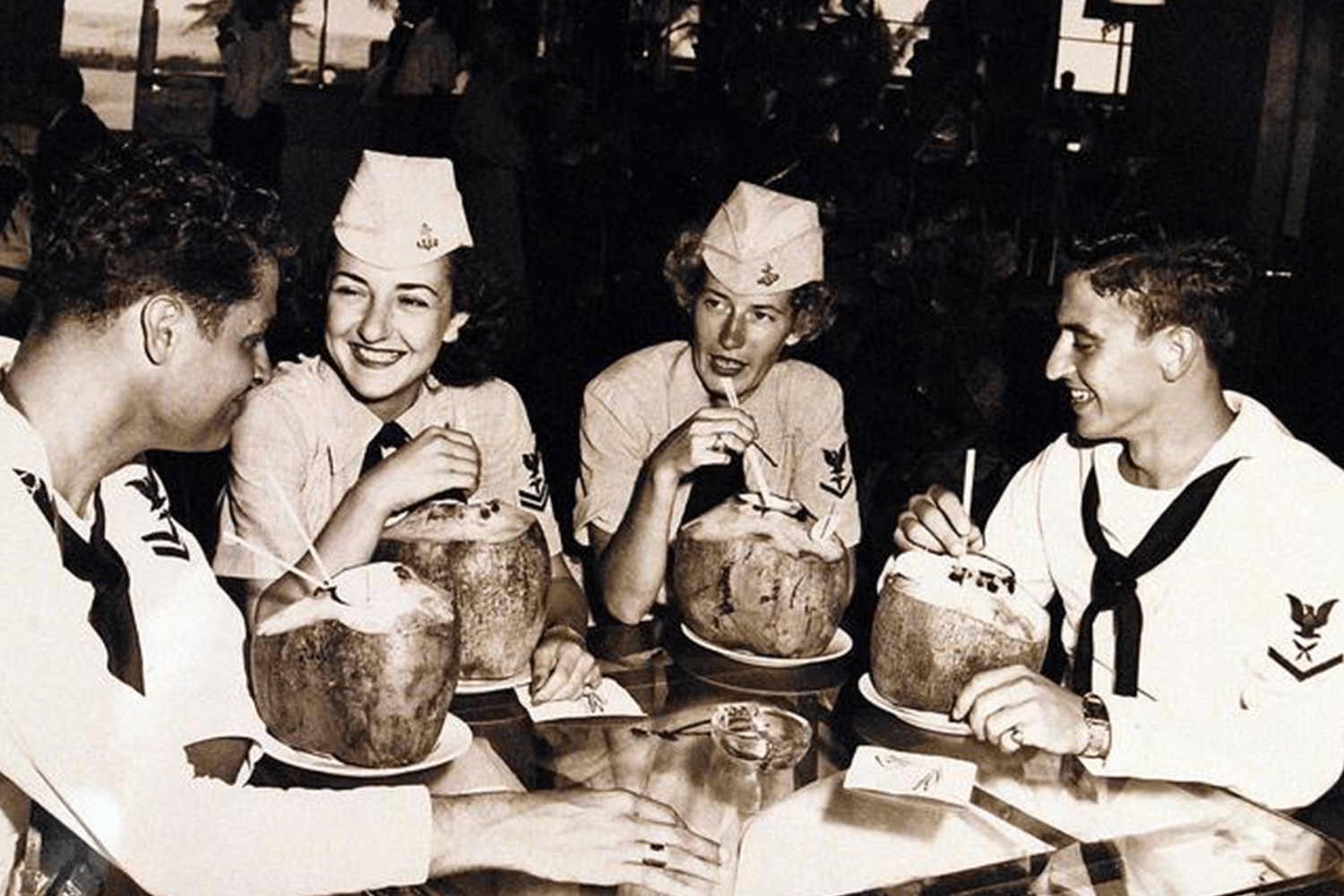
It’s 2021 though, a post-cocktail revolution world, and no longer is it satiating enough to serve a proper, fine-tuned classic. No, it must be tweaked and rejiggered and deconstructed, obliterated down to its atomic levels and glued back together with spare parts. Right?
“We’re living in the age of liquid intelligence, and I’ve had all these riffs with clarifications and milk punches, but the flavor just isn’t there,” says Carlos Irizarry, the head bartender of La Factoría, one of the absolute pinnacles of cocktailery and unabashed good times and too-late-evenings the world over. “The science is important, but the classic is a classic for a reason. And when you mess with it, it’s so easy to fall into that sunscreen-fake flavor.”
Indeed, there are piña coladas where melting pineapple ice cubes are topped with rum. Where whipped cream enters the fray. Where coconut-flavored spirits replace actual coconut. Where rum is thrown to the wayside entirely. Drinks with so many substitutions that they resemble piña coladas in obscure conceptual theory alone.
“I feel like the most baller way to make piña coladas now is the classic, with fresh pineapple juice, Coco Lopez and then a nice dark rum like Don Q Añejo” Irizarry says. Still, he’s a mad scientist at La Factoría, not a swim-up pool bartender, and some allowances are made for improvements. “The two main reasons why our piña colada is different are that we take the Coco Lopez and modify it, adding a little bit of salt and some real coconut. And then the pineapples are all local pineapples. The truth is the pineapples here in the Caribbean grow smaller and juicier, and we have four varieties endemic to the island. The juice here is bomb.”
At La Factoría, they also hew back to the old days by shaking their piña coladas and serving over crushed ice, rather than blending. “Then we adapt to the modern taste with one small dash of Angostura bitters and one small dash of lime juice to give it a nice balance with the rest of the flavors,” Irizarry says. He garnishes the drink with a fresh mint sprig and a dried pineapple slice. The drink is lighter and more refreshing and balanced than its historical counterpart, but true to its ethos.
For Irizarry, these are the expert touches guests expect at a bar such as La Factoría. Even so, it’s not what the piña colada is all about for him. It’s about that ineffable sense of fun and family, of good times and relaxation. “The piña colada doesn’t remind me of the beach,” he says. “It reminds me of me and my father, basketball games, my father would buy me a piña colada that was watered down and had that bright red cherry. And the piña colada is what my mother did whenever we had visits to the house. The image of the piña colada has a sense of place for people, but to us in Puerto Rico, it was something of the everyday.”
Sometimes in the rush to reinvent and tweak and improve, we lose sight of what we had to begin with. The perfect piña colada may well be that original from the Caribe Hilton, or one close to it, or whichever one brings you to that sweet spot at the intersection of pineapple, coconut and carefree nostalgia.
Every Thursday, our resident experts see to it that you’re up to date on the latest from the world of drinks. Trend reports, bottle reviews, cocktail recipes and more. Sign up for THE SPILL now.
